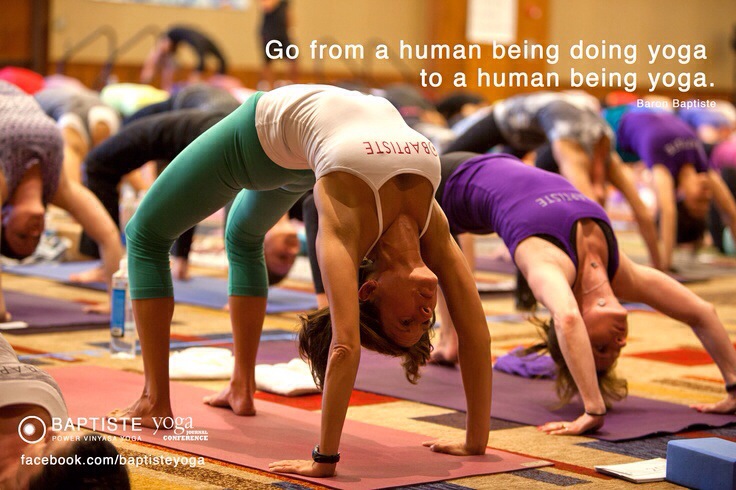What is yoga teaching?
Are we really what or who we say we are?
Or can we simply allow things – ourselves – to arise and just see what comes up?
‘When you teach from your own practice it resonates more profoundly with your students.’ As a primary school teacher, this was a revelation for me as often you need to keep you as ‘Teacher’ and you as a ‘Human Being in The World’ quite separate. Clearly, it is all too easy to be blocked by my own ideas of what ‘teaching’ is or what it should be.
New teachers often have a natural ability to or affinity with trial and error. They don’t necessarily have the density of experience weighing on them. Of course, they have a gammett of other weights dragging them down – am I good enough? Do I know what I’m doing? Will people like me?
We have to let ourselves off he hook to be who we are as yoga teachers so that our students feel they have the space to do the same.
The habits of mind are extremely powerful. What we tend to practice is what our mind is focusing on at any given moment. When we use it as a focusing tool or energy source it can be a very powerful teaching tool. Often students don’t realize they have this access point, but as teachers we can see things that they can’t or may not realize that they are practicing. It saddened me to learn that more often than not people are practicing disgust for their bodies. Furthermore, the amount of information coming at us in today’s technological age is continually reminding us why we should continue to live in various states of fear.
However, if as teachers we can identify this in the moment, our language can ease them off of their self-punishment and direct them somewhere else. In this way, we can take students from distraction to direction. Distraction is our most common state of mind, but often this leaves us in a heightened state of anxiety or fear. The physical practice of yoga can be a great source of releasing students from these distractions.
Teachers are like tuning forks: we vibrate our energy out and others tune in. We make offers and our students are invited to try on these tools and ideas. But as teachers, we are always students. Teaching, in itself, is a practice. The contradiction of teaching is that we have to bring ourselves to the class but also get ourselves out of the way.
The restraint of the modifications of the mind-stuff is yoga – Book 1, Sutra 2
What we practice on the mat as movements of our mind, this is what we take into our yoga teaching.
The books by the mystics say that what we are is LOVE.
Love is being the other.
Love is wanting for the other what they want for themselves.
Love arises when the division of connection is no longer present and we become an expression or extension of the other.
In practice: When we feel separate from our students we feel fearful, but when we are in it together this dissipates. When we want for them what we want for ourselves, then our self-concern for ‘doing a good job’ falls away. In other words, whatever the student’s get, I get too. Often we assume that the role of the teacher is one where they hold a position of ‘I know more than you and/or am better than you and you should listen to me and do things my way.’ Rather, the practice of yoga and of love is such that, as teachers we come to the practice with an attitude of ‘Here I am, sharing this experience with you.’ When we drop the limitations that we put on ourselves, we become more affective. What we are working towards in our personal practice and in our teaching is that the contrast of how we are before class is not so different to when we walk out. In this way we can live as an expression of our yoga, and our teaching.
An offering…
Set an Intention for Teaching Your students leave feeling better than when they arrived. They leave your class and they feel equipped, they feel recharged, they feel more inspired. They feel more capable and they go home feeling better about themselves and their lives. They may not know how or what made it happen but they do know that it happened and if they stay with it their lives will get better.







